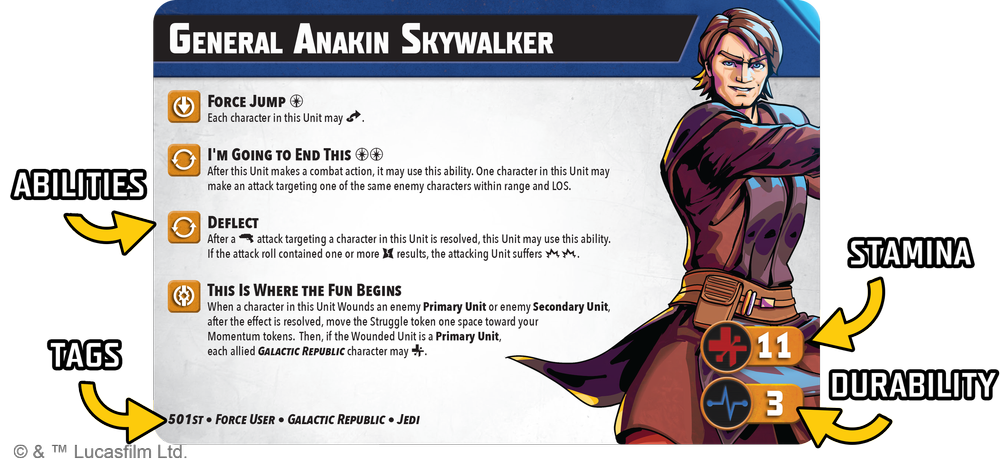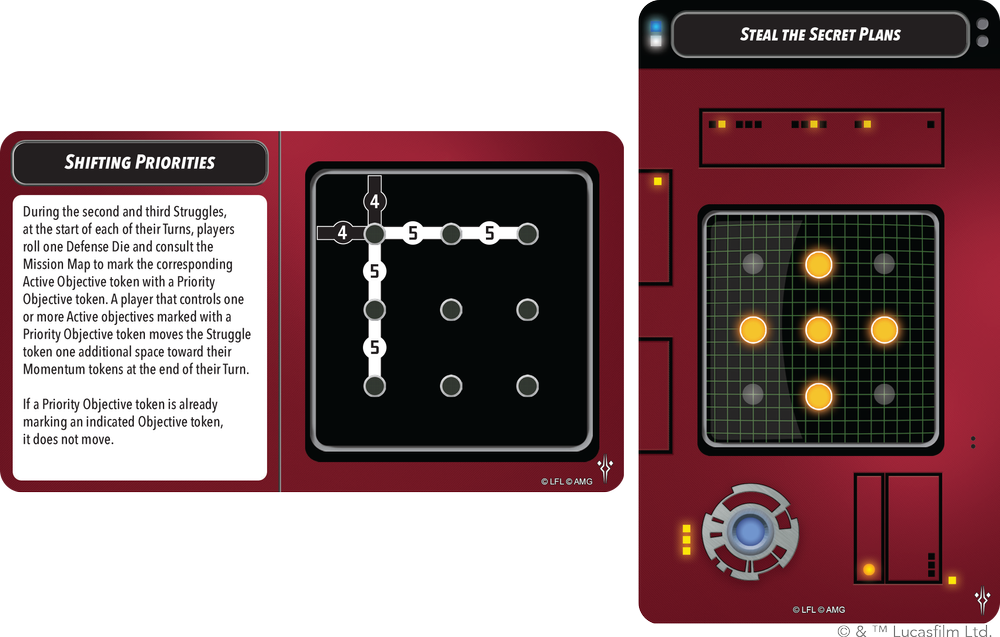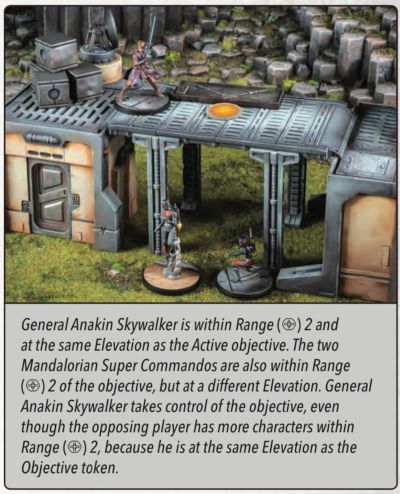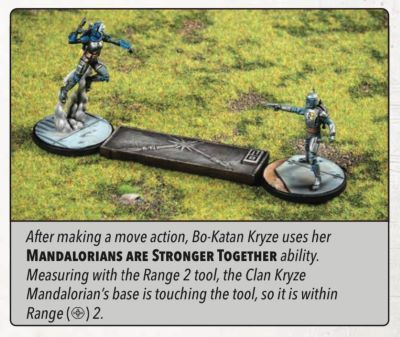Core Rules - First Thoughts

Woah! Atomic Mass Games has come in clutch this week! They released the complete Core Rules for Shatterpoint. I was not expecting them to come early, especially not this early. We learned a lot about the game through the demos at both Adepticon and SW Celebration and I was fully expecting that to be the extent of our info until release. AMG also continues to release spoiler articles about the core box units, which I will cover soon.
I won't be going too deep into the rules here, but I encourage you to read the whole book for yourself to help grasp the rules before you get to the tables. You can find them here. Today I will just cover the more interesting aspects of the game and how it is similar or different from other AMG games.
Disclaimer: If I have any of this wrong please let me know. I am trying to paraphrase some of the lengthier rules in order to make it a little more digestible.
Attacking and Defending P.32
Attacking in Shatterpoint seems to be pretty straightforward until you get to the expertise step and attack trees. That's where the game differs the most from other games and gets a little more complicated.

Let's use a different example than the rule book does: Rex attacking Asajj. Each unit's attack and defense dice for both ranged and melee is listed. Unlike Legion, but similar to X-Wing, defense dice are a fixed number. Doesn't matter if your opponent rolls 3 attack dice or 10, you will always roll the same amount.


So Let's say Rex is performing a ranged attack against Asajj. After measuring to make sure Res has range and LOS you would roll both attack and defense dice. Rex rolls 7 attack dice at range and Asajj rolls 5, let's say she's using her Jar'Kai stance card. Rex rolls 1 Crit, 2 Strikes, 3 Expertise, and 1 Failure. Asajj rolls 1 Block, 2 Expertise, and 2 Failures.
Consulting Rex's attack expertise chart you can see that for rolling 3 expertise icons he would get to add 2 dice with crit icons and the third would do nothing. Making Rex's dice 3 Crits, 2 Strikes, and 1 Failure.
Consulting Asajj's defense expertise chart you can see that rolling 2 expertise means she (using Jar'Kai) will get to add two blocks and change one of Rex's crits to a strike. Making her dice 3 Blocks and 2 Failures.
Since Asajj was able to change one of Rex's crits to a strike Asajj will block 3 strikes. That means Rex still hits her with 2 (note: crits cannot be blocked). That all means this attack was a success! A successful attack will then move on to the attacker's attack tree. Continuing this example, let's look at Rex's tree. Since he had two successes he can choose to move two spaces on his tree. Let's use the top branch for this example. With two successes he will deal four damage to Asajj since both his first and second successes deal two damage.
That's about it, at this point in the sequence players are now able to use any remaining abilities on their attack or defense expertise charts like moves, heals, etc.
-Attack Over-
Wounded, Injured, Defeated P.34
This is another aspect of Shatterpoint that I am a huge fan of. I think it adds a cool new level of tracking damage and dealing with the consequences of being damaged. There are two different trackers of damage. They are Stamina and Durability.

Anakin, for example, has 11 Stamina and 3 Durability. In super simple terms it means it takes essentially 33 damage to defeat Anakin, but it is actually more complicated than that. I am going to just quote the rule book for this part. I will discuss my thoughts after.
DAMAGING UNITS
There are many ways to damage characters and Units – abilities, attacks, and even missions may deal damage. When a character or Unit suffers damage, add Damage tokens to its Stat Card equal to the damage suffered.
BECOMING WOUNDED
When a Unit has a number of Damage tokens equal to or greater than its Stamina, that Unit immediately becomes Wounded and gains a Wounded token. When a unit becomes Wounded, the opposing player adds 1 Momentum token to the Struggle Tracker in the next available space on their side of the Struggle Tracker moving toward the center. Wounded Units do not contest objectives. Wounded Units cannot suffer damage or have damage removed from them. If a Unit becomes Wounded during its activation, its activation immediately ends.
A Unit that has any number of Wounded tokens must spend
1 Force for each of their Wounded tokens as an additional cost to use an Active or Reactive ability.
BECOMING INJURED
At the beginning of a Wounded Unit’s activation, it flips its Wounded token to the Injured side, removes all damage, and removes one condition. A unit that has any number of Injured tokends must spend 1 Force for each of their Injured tokens as an addditiaonal cost to use an Active or Reactive ability.
BECOMING DEFEATED
After a Unit’s activation, if the Unit has Injured tokens equal to or exceeding its Durability, it is Defeated. All characters in a Defeated Unit are removed from the battlefield.
If the Defeated Unit’s Order Card is outside of the Order Deck (such as in the Order Discard Pile, in reserve, or currently revealed), remove it from the game. Otherwise, when the Unit’s Order Card is revealed from the Order Deck, remove it from the game and reveal the next card instead.
I think this is a really neat way to track damage. I am a huge fan of the multiple conditions each unit can suffer. I love the fact that wounded units do not count toward objectives. I think that has the potential to add some extra stakes to unit activations right before scoring.
I also like the fact that units always get one more activation before being taken off of the board once suffering enough damage to die. It's a really nice effect that has shown up here and there in other games but giving it to all units here is great. Wounding units also move your momentum up a spot, which brings me to my next topic:
Momentum and Struggles P.20
This is such a neat way of tracking victory points and scoring. I am a big fan of the struggle tracker and how it works. Struggles are the main way to win the game. The first player to win 2 struggles wins the game. The way you win a struggle is by moving the struggle token and your momentum tokens in such a way that they would end up in the same space.

The black cubes are Momentum tokens and the white cube is the Struggle token.
You move the momentum tokens by doing things like wounding enemy units, moving the struggle token on their opponent's side of the tracker, and (excluding on the first turn) if a player moves the token at the end of their turn if the struggle token is in the middle space both players gain momentum.
You move the Struggle token by controlling the objectives. You check for control at the end of each of your turns and move the token accordingly.
This makes it similar to a "game of tug-o-war." I think I will really enjoy this aspect of the game. It seems to me that 9/10 times the game will not have a clear winner until at least halfway through the second struggle. If I can feel like I'm losing and bring it back later in the game it always feels better than an all-out win. Scoring at the end of each person's turn feels a little weird to me, but the game itself does not have a limited number of rounds like Legion or others. You essentially play until someone wins. I think there are ways that they keep the game from lasting forever, but some are still just going to be quicker than others. I'm interested to see how that works in a tournament setting.
Missions and Controlling Objectives P. 7, 18-19

It is my understanding that the core set only comes with one mission set. I am okay with that, this will be a lot to learn when the game first drops, and adding a bunch of missions to that will make it a lot harder to learn. This mission also seems like it will have a decent amount of variety and replayability.
It looks like that at any given time during the first struggle there are 5 objective tokens on the board. You score by "controlling" objectives. You control an objective if you have the most characters within range 2 of a token. There are some weird ties and things that do with elevation too.


Side note here: In Shatterpoint the word "within" does not mean the same thing as in Legion. In this case, as long as you are touching the tool you are within.

That's all I have to say for now. I am so excited about Shatterpoint that I can barely stand it. June can't come fast enough. As they release more spoilers I will be doing my first thoughts on the Units and Squads that we get to see, so look out for those! As always thank you for reading.
